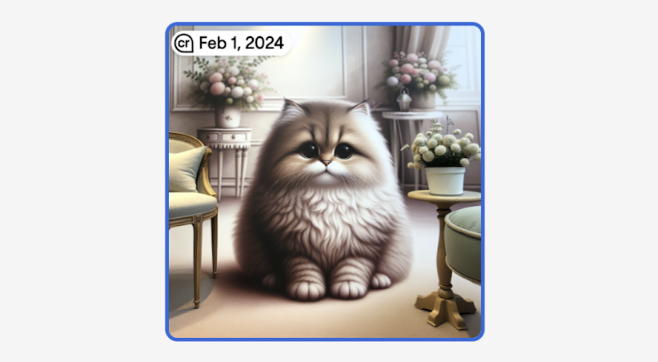The latest one to get onboard is OpenAI as the company, in a recent update on its official website, has confirmed that it will start adding the C2PA watermarks to the images generated using DALL-E3 language models. Beyond adding the watermarks, the metadata will also contain the necessary information required to verify the authenticity of the image and check if the image has been generated using AI.
Applies to ChatGPT and GPT AI
The new watermark from C2PA will apply to images created using ChatGPT and services and apps that rely on OpenAI’s API to generate images. Images created using these services will have a CR symbol visible along with an invisible metadata component which can’t be removed and the logo appears at the top left corner of the image.
Rollout details
OpenAI has confirmed that the watermarks will start appearing to users starting February 12. And, this looks like a server-side change so there won’t be user interaction required. The feature will be turned on by default and we expect that there will be no option to turn it off or remove the metadata or the logo from within the ChatGPT-like tools.
What this means for users
As mentioned, the new watermark system has been adopted by several companies to let users and people know whether an image has been generated, manipulated or edited using AI tools. The Cr watermark will allow users to check the AI tool that has been used to make the content and all the other original content details.
OpenAI has said that there will be no latency due to this new watermark and the image generation performance won’t be affected.




![[CITYPNG.COM]White Google Play PlayStore Logo – 1500×1500](https://startupnews.fyi/wp-content/uploads/2025/08/CITYPNG.COMWhite-Google-Play-PlayStore-Logo-1500x1500-1-630x630.png)